Allergies torment the people that struggle with them. Runny eyes, runny noses, stuffed noses, ear pressure, blocked sinuses – the battle never ends. You spend each day checking the pollen report and stuffing pockets and purses with tissue packs. If you’re an animal lover that battles allergies, you may feel pet ownership is out of your hands. How to balance wanting to snuggle up with a loving dog when all that hair may trigger a sneezing fit? (Or worse!) You’ve heard the rumors of hypoallergenic breeds, but are the whispers true? Are there really canines out there that share homes with allergy sufferers? It turns out – with a little work – it’s possible to embrace your love for a dog without spending every other day in the hospital needing a steroid injection! We have the best dog breeds for people with allergies – each with their own unique characteristics!
Dogs and Allergies
If you’re feeling alone in the dog (or cat) allergy department – don’t. A whopping 10% of the country shares your dilemma. That statistic comes directly from the American College of Allergy, Asthma, and Immunology (AAFA). They track every known allergen impacting quality of life. And pets factor into that list in a big way. But, unfortunately, people often mistake the cause of this allergy.
Hair, it turns out, isn’t the only culprit. It’s just the easiest one to spot. The more a dog sheds, the more fur enters the environment. Staying on top of your vacuuming duties helps minimize the effect all of that loose hair might have on your allergy triggers. The best dog breeds for people with allergies shed little or less frequently than other breeds. (If you’re hoping for a dog that NEVER sheds, you’re out of luck – there’s no such canine)
The REAL Allergy Culprit
If you start tearing up when you walk into a canine household, though, odds are the hair ISN’T the only problem. It’s the dander that’s getting to you and causing your allergies to flare. Dander is the dead skin left over when your dog sheds their hair – similar to dandruff in humans. Most breeds shed around once a month (every 21 days), and the dander lifts into the air, settling EVERYWHERE. You touch the dander when you sit on the couch, and you breathe it in through the air. Suddenly, you’re struggling to breathe or see through those swollen eyes. And you don’t understand, because you vacuumed yesterday.
The same dogs with minimal shedding habits make for the best dog breeds for people with allergies. If they don’t release that hair, they also don’t produce as much dander. (Makes sense, right?)
Hypoallergenic – A Complicated Issue
Many dog breeds come with “hypoallergenic” labels. And if you survive on antihistamines and have a closet stocked with tissues, that not-so-little word sounds like a dream come true. Unfortunately, there’s no such thing as a 100% hypoallergenic dog. EVERY breed sheds at some point in their life, producing dander. EVERY dog requires some grooming care – even (especially) hairless dogs. So what does that hypoallergenic label actually mean? These are dog breeds that:
- Fall into the hairless category
- Shed minimal amounts or less frequently
- Have short, single-layered coats
Such dogs make the best dog breeds for people with allergies, but they aren’t perfect. If you have a medical record with a positive test for dog allergens, you need to consider doing a test around the dog you’re considering adding to your life. Talk with a friend or family member and ask if you can come over to spend time with their pup. While the breed may be hypoallergenic, you could still find yourself having a strong (or even severe) reaction. It’s better to be safe than sorry.
Stacking the Allergy Deck
No one wants to keep a dog fanatic away from the four-legged love of their life. And allergies shouldn’t stop you from bringing a dog into your home. Good thing you CAN take steps to minimize the dander and hair in your home. This will minimize any allergens, which should keep you breathing as easily as possible. Of course, it’ll mean a lot of responsibility and work on your part, but if you get to keep your beloved pup close by, it’s worth it, right?
- Wash your dog’s bed regularly
- Change the air filters in your house twice as often as recommended
- Consider purchasing a high-efficiency HEPA air cleaner
- Set up an “allergy-free” zone for yourself that your dog never enters
- Bathe your dog in an anti-allergenic shampoo every month
- Brush your dog 4-5 times a week to minimize shedding hair
And, of course, you can always chat with your doctor about regular allergy shots or medications – if these steps aren’t enough.
Best Dog Breeds for People with Allergies
No one should have to skip dog ownership because of something like allergies. Medical advancements have allowed many people to participate in their favorite outdoor hobbies. And you can look into the same treatments to allow you to bring a four-legged friend into your life. Or you can research a hypoallergenic breed. If you take precautions (such as understanding NO breed is 100% allergen-free), you’ll find yourself brightening your life. And we have some of the best dog breeds for people with allergies – in every size, shape, and personality.
Best Small Dog Breeds for People with Allergies
Everyone has size needs when it comes to adding dogs to their homes. And while logic would seem to dictate that a smaller canine would shed less, that doesn’t always hold. Some tiny pups manage to produce MOUNTAINS of hair and dander! If you’re a fan of the smaller dog set, though, don’t fret. We have some of the best dog breeds for people with allergies in a portable size.
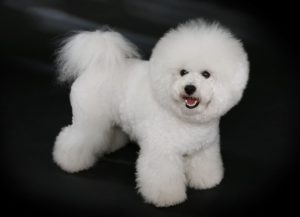
Bichon Frise 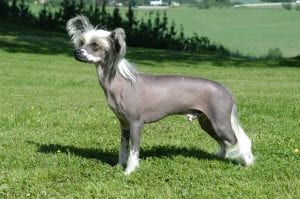
Chinese Crested 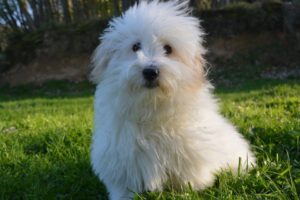
Coton de Tulear 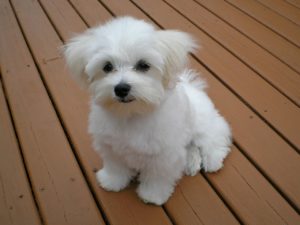
Maltese 
Shih Tzu
- Bichon Frise: In French, “Bichon Frise” translates to “curly lap dog.” And those distinctive tight curls are the very thing that makes these dogs perfect for allergy-sufferers. The spirals trap and hold any loose dander until grooming day, when you (or the Groomer) brush and clip everything away. Bichons have hair that grows at a constant rate rather than fur, so they don’t shed. And with a love of water that dates back to their history as sailors’ companions, you’ll find them eager to join you on your laps around the pool.
- Chinese Crested: Despite their name, Chinese Crested originated in Africa. The name changed after Chinese traders brought them aboard their ships for vermin control. Obviously, the hairless version of this breed works best for people with allergies, but you’ll need to keep up with their demanding grooming needs all the same. And even if you choose a Powder Puff (the haired version), regular brushing will help keep the hair and dander under control. They’re one of the best dog breeds for people with allergies, and their unique appearance has won them Hollywood fame in multiple movies.
- Coton de Tulear: Allergy-sufferers may hesitate when they see the fluffy, fly-away coat of the Coton. However, this soft cottony pup rarely sheds, and if you keep the flowing hair trimmed in a traditional “puppy cut,” their grooming needs default to the occasional brushing. Cotons get along well with children and other dogs, and they form lasting bonds with their owners. The Coton isn’t the most widely-known breed out there, but they’re quickly growing in popularity – especially among people who struggle with their allergies.
- Maltese: (Little white dogs make quite a few appearances on this list, don’t they?) Maltese have long, flowing hair requiring daily brushing – if you keep up that dramatic length. If you trim it back, though, the hair (not fur!) rarely sheds, and you won’t have to cope with a lot of loose dander. People love these funny, loyal pups, and the breed adores everyone: kids, cats, and other dogs! They also span the personality spectrum from quiet to playful. They’re the perfect little dog breed, and the hypoallergenic label completes the picture.
- Shih Tzu: Shiz Tzu hair has a similar structure to ours. You have to stay on top of regular cutting (unless you want that lovely traditional look), but shedding WON’T turn into a problem. Few people report dander problems, making this one of the best dog breeds for people with allergies. They’re also devoted to their owners and energetic. Some people work with their Shih Tzus on agility training! (Just make sure you take that antihistamine before you decide to venture into the outdoors with all of those plants)
Best Medium Dog Breeds for People with Allergies
Not everyone has the same space demands in their home. And while you’d love to open your home to the perfect “shed-less” pup, you’re not quite ready to tackle the needs of a bigger dog. That’s where these medium-sized dog breeds for people with allergies come in. They range in their personalities and exercise needs, but they won’t take over your entire couch.
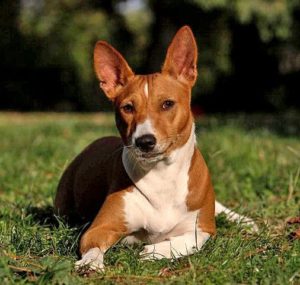
Basenji 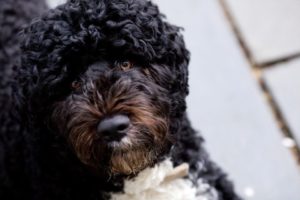
Portuguese Water Dog 
Xoloitzcuintli
- Basenji: If you can’t decide if your a dog-person or cat-person, the Basenji is the answer. This beautiful dog displays several cat habits, including self-grooming! Combined with a short coat, they’re one of the best dog breeds for people with allergies. You don’t even need to give them a bath! (Unless they get into something disgusting, anyway) Known as the “barkless dog,” Basenji produce an unusual sound somewhere between a yodel and a chuff. They DO have an independent streak, though, so have some patience when it comes to training.
- Portuguese Water Dog: Remember when Bo and Sunny entered the White House? They introduced the Portuguese Water Dog to many people. Now everyone recognizes this energetic, intelligent, and super-trainable breed. However, people may or may not know how well the dogs work for people with allergies. Remember the curly coat trick? They have it, and they also have a single-layered coat. There’s no undercoat to constantly shed and produce dander. You need to stay on top of grooming, of course, but you won’t face the heavy shedding of other water-loving breeds.
- Xoloitzcuintli: Xolos actually come in three sizes (toy, miniature, and standard), but the standard size is the most popular. The same goes for the hairless version – though the haired version doesn’t present many difficulties for people with allergies, either. The coat’s short and flat, making it easy to keep brushed (with no undercoat to shed). They’re one of the calmest breeds out there, forming deep attachments with their families. If you live in a warm region (or have plenty of blankets and sweaters handy), you couldn’t ask for a better pup.
Best Large Dog Breeds for People with Allergies
You may feel that the largest breeds are out of reach. After all, most of the giant breeds out there come complete with thick, shedding coats. You’d love to throw a ball in your yard with a larger breed, but thinking of all that hair (and the subsequent dander) makes your ears swell shut. Not to fret! There ARE bigger canines out there who come complete with the hypoallergenic label.
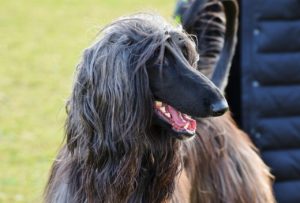
Afghan Hound 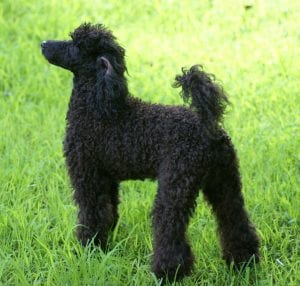
Poodle 
Schnauzer
- Afghan Hound: I know what you’re thinking: all of that long, flowing hair HAS to be terrible for allergies, right? Nope! That silky coat actually doesn’t shed very often. As puppies, Afghans start with short, fuzzy coats that continue to grow throughout their lives. You WILL need to stay on top of grooming needs if you bring an Afghan home, but you won’t find yourself reaching for a continuous stream of tissues. You’ll also find these tall, lean hounds remain devoted to their families, forming loving bonds with you the instant you bring them into your life.
- Poodle: True, Poodles come in three different sizes (toy, miniature, and standard), but the standard fits the bill for people craving a big dog in their lives. Those tight curls on a light-shedding coat are part of what makes this dog one of the AKC’s most popular pups year after year. You need to stay on top of clipping that hair so it doesn’t grow out of control, but there’s no denying this is one of the best dog breeds for people with allergies. They’re also incredibly intelligent, active, and sensitive. (No wonder they’re popular)
- Schnauzer: Isn’t it lucky that so many of the best dog breeds for people with allergies come in multiple sizes? Schnauzers round out that department in miniature, standard, and even giant! You read that correctly; you can bring home a Giant Schnauzer with no fear of swollen, teary eyes! With daily brushing and regular trips to the groomer, their hair doesn’t present a problem of dander or shedding. People love their regal mustaches, and they’re one of the easiest dogs to train. You’ll also find them loyal and content to sleep by your side. (Or in your lap – Giants have little understanding of their size)
What About Doodles?
Many people with allergies look to add Doodle breeds (i.e., Labradoodles or Golden Doodles) to their household. After all, Poodles fit the hypoallergenic bill, and branding often claims Doodles carry the same genetics. Which is true – up to a point.
However, only HALF of Doodle breeds come from those Poodle roots. The other half comes from dog breeds with HEAVY shedding and dander habits. Labradors and Goldens have double coats that are constantly shed, producing a dander burden that will take out even mild allergy-sufferers. A litter of Doodle puppies may get a full dose of the Poodle’s coat, half, or NONE – or something in-between. So you’re rolling the dice, and you may not get the hypoallergenic characteristic you’re hoping for. If you want a dog that infrequently sheds, leading to minimal dander, stick to one of the best dog breeds for people with allergies.
Cut the Tissue Burden
Unfortunately, there’s no such thing as an allergy-proof breed. EVERY dog sheds, producing dander. If you look through the AKC’s list of hypoallergenic dogs, though, you can find breeds with single-layer coats, hairless coats, or minimal shedding. These are the best dog breeds for people with allergies. And if you adopt a cleaning routine that keeps the hair and dander under control, you’ll find yourself breathing easy – literally!
Never let a little thing like the sniffles stop you from enjoying life with a pup.

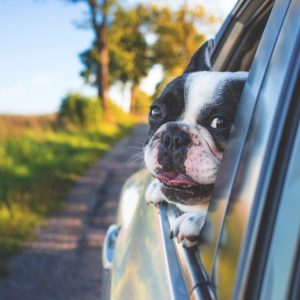
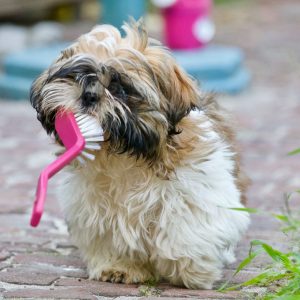
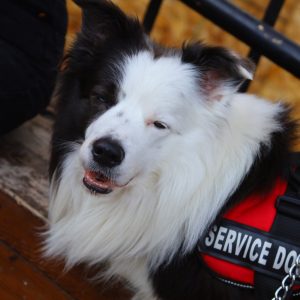
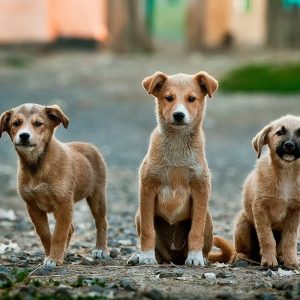
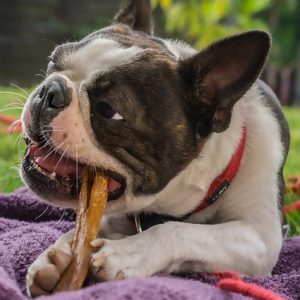
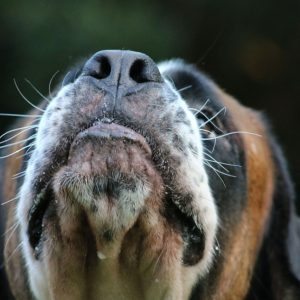
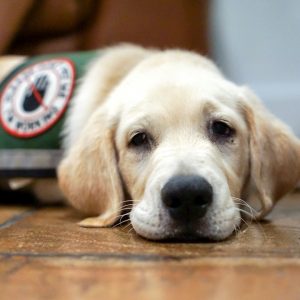
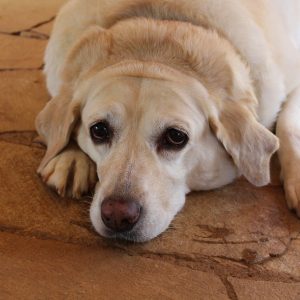
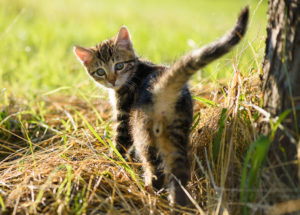
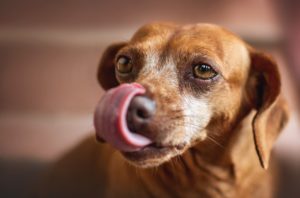
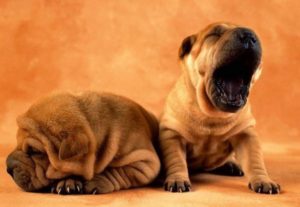
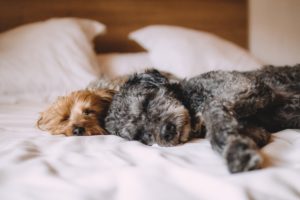
3 Comments
Hello Andria Kennedy ,
Thanks for sharing such a valuable article on hypoallergenic truth and best dog breed for people with allergies. This is an informational and useful article which tells about the best dog breed for people with allergies. I am looking for a dog as a pet, so this information will helps me to buy a dog. We also have to take care of our pets on daily basis so i also want to share some information on best hypoallergenic dog shampoo which i have read here https://hypoallergenicpetbreeds.com/best-dog-shampoo-for-allergy-sufferers/.
Looking for more information about pet dogs from your side. Will wait for your next article. Thanks.
Michael Smith
Hi Michael,
I’m glad you found the article helpful. We definitely want to help people out, no matter what their particular needs may be. If you’re interested, you can check out our breed link: https://www.boneandyarn.com/category/breeds/. We add articles on individual breeds, as well as exploring topics such as breeds for people with children or people looking to pair dogs and cats. We also took a look at dog wipes, which included a section on hypoallergenic wipes for people (and dogs) with special needs: https://www.boneandyarn.com/best-dog-wipes/. Thanks for keeping up with us here on Bone and Yarn – we appreciate it!
~Andria
Thanks Andria.
I have read your these blog too. I love the blog of wipes for our dogs https://www.boneandyarn.com/best-dog-wipes/. Good work.
Thanks
Michael Smith